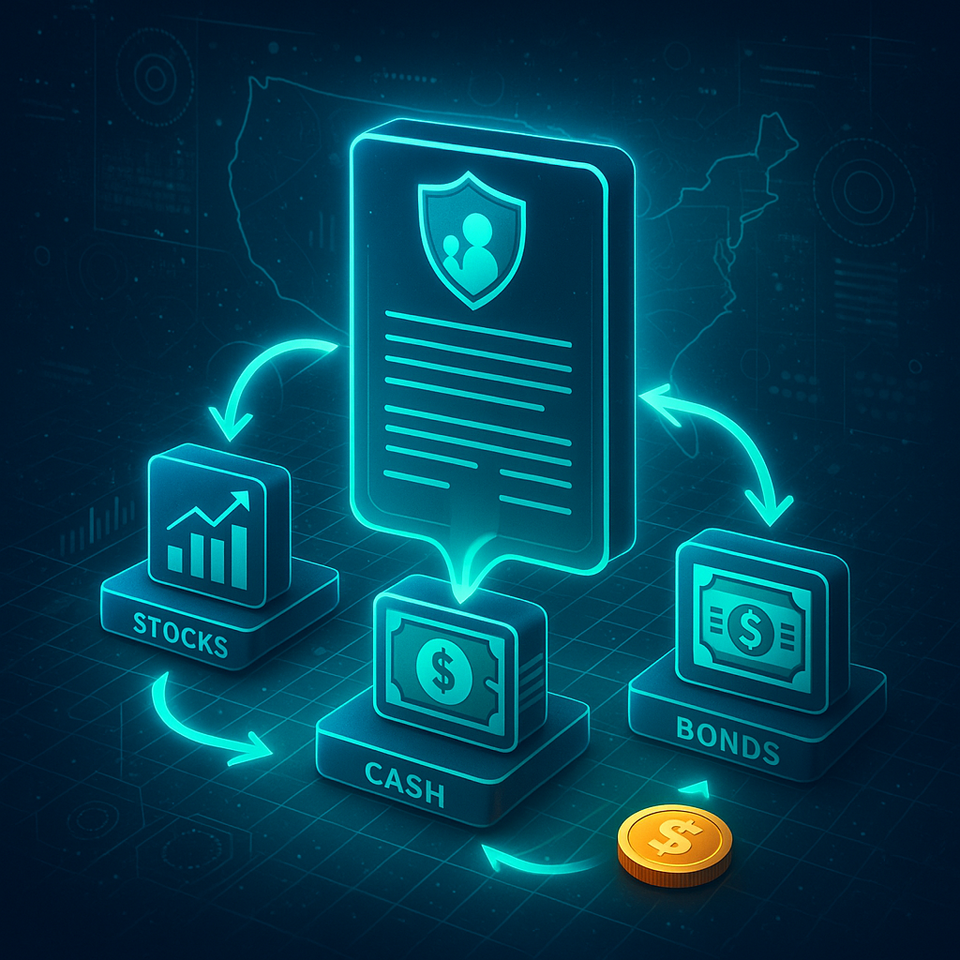
Introduction
The digital landscape is changing at an unprecedented pace. Businesses and individuals face sophisticated cyber threats daily. These threats are now empowered by artificial intelligence (AI). Traditional cyber insurance policies often struggle to keep up. They were not designed for the speed and scale of AI-driven assaults. This article explores the evolving nature of cyber risks. It highlights the critical gaps in current insurance coverage. Understanding these shifts is vital for financial planning. It helps in safeguarding digital assets against future challenges. We will delve into how AI is reshaping the threat landscape. We will also examine how the insurance industry must adapt. Protecting your investments and operations demands a clear strategy. This strategy must consider these new, intelligent adversaries.
The Escalating Landscape of AI-Powered Cyber Threats
The advent of artificial intelligence has revolutionized many sectors. Unfortunately, it has also provided new tools for cybercriminals. AI enhances attack capabilities significantly. It makes cyber threats more evasive and difficult to detect. This new era demands a re-evaluation of security measures. Companies must understand these advanced attack methods. They must also develop robust defense mechanisms. The stakes are higher than ever for digital security.
Defining AI-Powered Attacks
AI-powered attacks leverage machine learning algorithms. They use these algorithms to automate and optimize malicious activities. These attacks learn from their environment. They can adapt their strategies in real-time. This makes them far more dangerous than traditional methods. For instance, AI can analyze vast datasets. It identifies vulnerabilities with unparalleled speed. It can also craft highly personalized attacks. This level of sophistication changes the game.
Examples of Advanced Threats
AI amplifies various cyberattack vectors. These advanced threats pose significant challenges. They can bypass many conventional security systems. Understanding these examples is crucial for preparedness.
Phishing and Social Engineering
AI generates highly convincing phishing emails. It can mimic human communication perfectly. It uses natural language processing (NLP). This makes it harder for individuals to spot fakes. AI also analyzes social media profiles. It gathers personal information for targeted attacks. Spear phishing campaigns become highly effective. They exploit individual vulnerabilities with precision.
Malware and Ransomware
AI develops polymorphic malware. This malware changes its code dynamically. It evades signature-based detection systems. AI-driven ransomware learns network defenses. It adapts its encryption methods. This maximizes its impact and ransom demands. These variants are harder to neutralize. They pose a greater risk to data integrity.
Automated Vulnerability Exploitation
AI scans vast networks for weaknesses. It identifies zero-day vulnerabilities quickly. It then designs and executes exploits automatically. This reduces the time between discovery and attack. It offers organizations little time to patch systems. Such automated exploitation is a critical concern.
Understanding Traditional Cyber Insurance Policies
Cyber insurance emerged to cover digital risks. It provides financial protection against various cyber incidents. These policies help businesses recover from attacks. They mitigate the financial impact of breaches. However, their design predates the current AI-driven threat landscape. Knowing the basics helps identify where they fall short.
Key Components of Coverage
Traditional cyber insurance policies offer broad protection. They aim to cover both direct and indirect costs. These costs arise from cyber incidents. Businesses rely on these policies for critical support.
First-Party Costs
These are expenses an organization incurs directly. They relate to responding to a cyberattack. Examples include forensic investigations. They also cover data restoration. Business interruption losses are often included. Ransom payments for ransomware attacks may also be covered. This helps maintain operational continuity.
Third-Party Liabilities
These cover legal costs and settlements. They arise from claims made against the insured. Such claims come from affected customers or partners. Regulatory fines can also be included. This applies to data privacy breaches. Protecting against these liabilities is essential. It prevents reputation damage.
Limitations and Exclusions
Despite their benefits, traditional policies have limits. Certain scenarios are often excluded from coverage. These exclusions highlight areas of potential vulnerability. They are critical to review carefully.
Acts of War or Terrorism
Most insurance policies exclude acts of war. This includes cyber warfare sponsored by nation-states. Distinguishing state-sponsored attacks from criminal acts is complex. This creates a significant grey area. It impacts coverage in geopolitically charged incidents.
Pre-existing Vulnerabilities
Policies often require minimum security standards. They may deny claims if these standards are not met. Undisclosed vulnerabilities can lead to claim rejections. This emphasizes the need for proactive cybersecurity. Continuous assessment is therefore paramount.
Human Error
Many policies exclude gross negligence or intentional acts. While not always an explicit exclusion, it can be a factor. It impacts the interpretation of claim validity. Employee training is crucial to mitigate this risk.
The Emergence of Coverage Gaps in the AI Era
The rapid evolution of AI-powered attacks creates new challenges. Traditional cyber insurance models struggle to adapt. This leads to significant “coverage gaps.” These gaps leave businesses exposed to substantial financial risks. It is imperative to understand where these vulnerabilities lie.
Defining “Known” vs. “Unknown” Threats
Insurance policies often differentiate between known and unknown threats. A “known” threat might be a vulnerability with an available patch. An “unknown” threat is a zero-day exploit. AI-powered attacks often exploit unknown vulnerabilities rapidly. They can also create new attack vectors. This blurs the line between known and unknown. It makes traditional definitions problematic. Insurers find it hard to underwrite these rapidly evolving risks.
Challenges in Quantifying AI-Driven Risk
Quantifying AI-driven cyber risk is exceptionally difficult. The dynamic nature of these threats defies static risk models. Insurers need new methodologies. These new approaches must account for speed and adaptability.
Rapid Evolution of Attack Vectors
AI allows attack vectors to change quickly. A new vulnerability can be exploited globally in hours. This makes traditional actuarial data less relevant. Risk assessment becomes a moving target. Policies need to be more agile.
Attribution and Intent
Determining the source of an AI-powered attack is challenging. Was it a state actor, a criminal group, or a rogue AI? This attribution directly impacts war exclusion clauses. Proving intent is equally complex. It creates disputes over policy coverage.
Systemic Risk
AI-powered attacks could trigger widespread, systemic failures. Imagine an AI-driven attack on critical infrastructure. This could affect multiple insured entities simultaneously. Traditional insurance models are not designed for such correlated losses. This poses a major threat to insurer solvency.
Adapting Cyber Insurance for the Future
The cyber insurance industry recognizes these challenges. It is actively exploring new approaches. Adaptation is crucial for continued relevance and effectiveness. These adaptations aim to bridge current coverage gaps. They also seek to provide more robust protection.
New Policy Structures and Endorsements
Insurers are developing innovative policy structures. They are also adding specific endorsements. These changes address the unique aspects of AI-powered threats. This includes more flexible and dynamic coverage.
Dynamic Risk Assessment
Policies are shifting towards continuous risk assessment. This involves integrating real-time threat intelligence. It also uses AI-driven security analytics. Premiums and coverage adjust based on current threat levels. This encourages proactive security measures by policyholders. It reflects a more accurate risk profile.
Parametric Insurance Models
Parametric insurance pays out based on predefined triggers. It does not require a lengthy loss assessment. For example, a payout could be triggered by a specific type of ransomware attack. It could also activate upon a certain duration of system downtime. This model offers faster claims processing. It is particularly effective for well-defined, measurable events.
The Role of Proactive Cybersecurity
Insurance alone is not enough. Proactive cybersecurity measures are paramount. Insurers are increasingly requiring advanced security protocols. They incentivize these measures through lower premiums. This symbiotic relationship benefits both parties.
MDR and XDR Solutions
Managed Detection and Response (MDR) offers 24/7 threat monitoring. Extended Detection and Response (XDR) integrates security tools. These solutions leverage AI to detect and respond to threats. They offer superior protection against sophisticated attacks. Implementing them strengthens an organization’s posture.
Employee Training
Human error remains a significant vulnerability. Regular, AI-enhanced training can simulate sophisticated attacks. This better prepares employees to identify threats. It reduces the likelihood of successful social engineering. A well-trained workforce is a strong defense line.
Incident Response Planning
A robust incident response plan is crucial. It dictates actions before, during, and after an attack. This minimizes damage and recovery time. Insurers often require such plans. They may even offer support in developing them. Effective planning saves both time and money.
Navigating the Market: A Guide for Businesses
Businesses must approach cyber insurance strategically. The complexities of AI-powered threats demand careful consideration. Informed decisions can significantly enhance protection. This guide helps navigate the evolving market.
Assessing Your Risk Profile
Understanding your organization’s unique risks is the first step. Identify critical assets and potential attack vectors. Conduct regular vulnerability assessments. Evaluate your current security controls thoroughly. This comprehensive view informs your insurance needs. It helps you choose appropriate coverage limits.
Key Questions to Ask Insurers
When seeking cyber insurance, ask detailed questions.
- Does the policy specifically address AI-powered attacks?
- Are acts of cyber terrorism or state-sponsored attacks covered?
- What are the exclusions related to pre-existing vulnerabilities?
- How quickly are claims typically processed?
- Does the policy include incident response support or vendor access?
- Are there incentives for implementing advanced security solutions?
These questions ensure clarity on coverage.
The Importance of Legal Counsel
Engaging legal counsel is advisable when negotiating policies. They can help interpret complex clauses. They can also ensure the policy aligns with your risk profile. In the event of a claim, legal expertise is invaluable. It helps navigate potential disputes. It ensures you receive the benefits you are entitled to. This expert guidance protects your interests.
Conclusion
The landscape of cyber threats is fundamentally changing. AI-powered attacks introduce unprecedented speed and sophistication. This creates significant gaps in traditional cyber insurance coverage. Businesses must recognize these evolving threats. They must adapt their digital risk management strategies. Proactive cybersecurity measures are no longer optional. They are an essential first line of defense. The cyber insurance industry is also evolving. New policy structures and dynamic risk assessments are emerging. They aim to provide more comprehensive protection. Choosing the right cyber insurance requires due diligence. It necessitates a deep understanding of your organization’s unique vulnerabilities. By combining robust security practices with appropriate insurance, businesses can navigate this complex environment more confidently. This approach helps secure digital assets in the age of intelligent adversaries. Continuous education and adaptation will be key. This ensures resilience against future cyber challenges. Investing in both technology and knowledge is paramount. This protects financial stability in a rapidly changing world.



